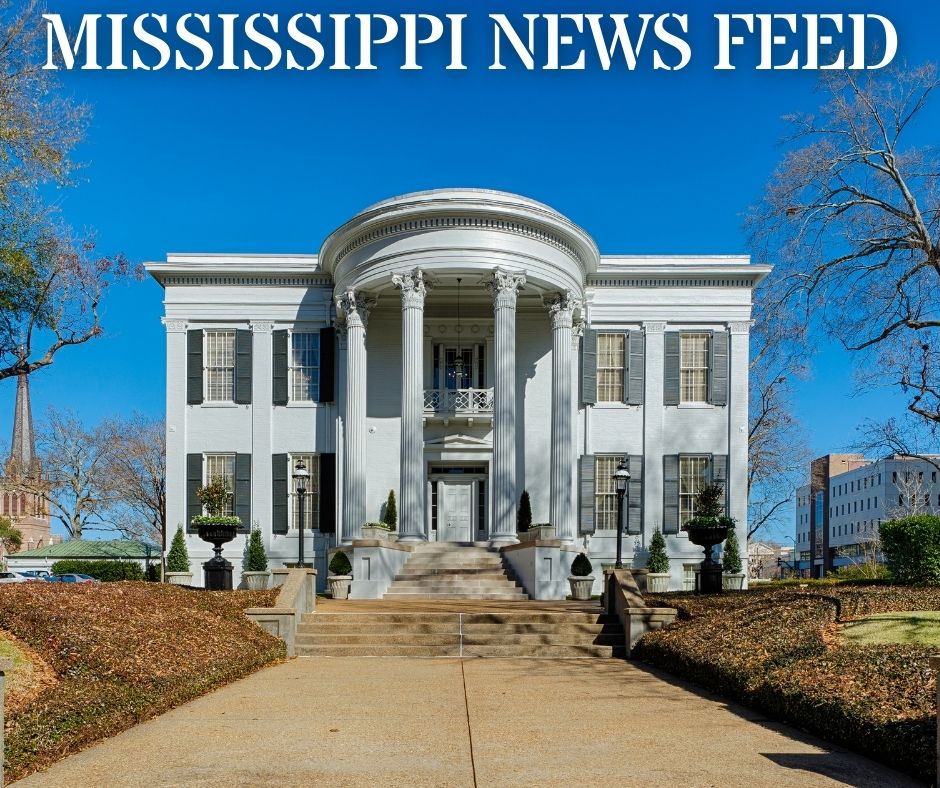Mississippi Today
Corps indicates support for altered version of ‘One Lake’
While the U.S. Army Corps of Engineers appears to be moving on from the “One Lake” flood control plan, the agency is indicating its support for an altered version of the proposal that includes other flood control components.
Since 2011, local officials at the Rankin-Hinds Pearl River Flood and Drainage Control District — also referred to as the Flood Control District or the Levee Board — have backed One Lake as the solution to a decades-long effort to curb flooding in Jackson. The effort traces back to the record-setting flood of 1979, which the Corps estimates would leave behind over $1.2 billion in damages if it happened today.
The proposal has garnered both support and opposition from politicians on either side of the aisle, with environmental advocates cautioning that One Lake would disrupt the water flow downstream of Jackson and harm valuable ecosystems. Proponents, including local business leaders, have hailed the proposal as a potential revenue-builder for Jackson and Rankin County. The idea behind One Lake was not only to reduce flooding by lowering and spreading the Pearl River out, but also to create recreational areas along the water.
The Corps, the federal agency in charge of approving such a project, visited Jackson last year to hear the public’s input. The group of engineers came back with a draft environmental study on Friday that appears to support a plan with similar features as One Lake with additional mitigation measures, including elevating homes and improving the nearby levee system.
Friday’s report also initiated a new public comment period that lasts until July 22. The Corps will hold a new round of public meetings, including two in Jackson on July 10 and one the following day in Monticello. For more information on how to submit comments or attend the meetings, visit the Corps’ project page.
What options are the Corps looking at?
Friday’s 300-page draft study narrowed the scope of the Pearl River flood control project to four options: a nonstructural option, the locally preferred plan (One Lake), a combination of other plans without a weir, and a combination of other plans with a weir.
The nonstructural option (called “Alternative A1” in the report) would consist of elevating and floodproofing up to 143 structures. Property owners would also have the option of voluntary buyouts, and their land would be converted into publicly owned greenspaces. This option, the report found, had the highest cost-benefit ratio of the four, a key criteria in the Corps’ decision-making. But Alternative A1 also comes with “significant uncertainties and risks,” the Corps wrote, as the plan’s success depends on the participation rate of the property owners.
One Lake (or “Alternative C” in the study) would relocate a dam near the J.H. Fewell water treatment plant, excavate the sides of the Pearl River and widen it for a 10-mile stretch from near Lakeland Drive to south Jackson. Alternative C had the lowest cost-benefit ratio of the four options, the study found. The Corps estimated that the project could cost anywhere from $1 billion to $2.1 billion, and that the annual cost of the project (between $40 million and $80 million) far outweighs the benefits from damage reductions ($14 million). The Corps’ estimate also far exceeds the $340 million cost estimate that local officials attached to One Lake as recently as 2022.
“Alternative C… is not justified under the traditional (Corps) benefit-cost analysis,” Friday’s report said.
The last two options are combinations of other plans. “Alternative D,” the one the Corps is tentatively supporting, includes building a dam on the Pearl River and widening the channel, creating a 1,700-acre lake — a smaller, but similar version of the 2,500-acre lake in Alternative C. Alternative D also doesn’t include moving the existing weir by J.H. Fewell, and the new dam would go in a couple miles upstream of the one proposed in Alternative C.
Another main difference is the other components of Alternative D, which includes elevating or floodproofing up to 60 structures, including 43 homes, as well as voluntary buyouts. The plan would also include improving existing levees, as well as building a new levee on the west side of the river that would reduce flooding for an estimated 250 homes in northeast Jackson.
The other combination plan, “Alternative E,” doesn’t include a new weir, but has less flood-reduction benefits than Alternative D.
“As a result, it can be reasonably expected that one of the (combination) plans, likely (Alternative D), would be the NED plan,” the report says (the “NED,” or National Economic Development, plan indicates which plan best meets the Corps’ criteria as far as weighing the costs and benefits of a proposal).
Alternative D, the report says, would cost between $485 million and $655 million. In 2022, the Corps announced it would spend $221 million in funds from the Infrastructure Investment and Jobs Act on the project.
Environmental advocates who spoke to Mississippi Today said they’re still reviewing the details of the corps’ new proposal, but said that the idea appears to raise similar concerns that came with One Lake.
“It’s going to dig out the wetland areas and the bottomland hardwoods, and it’s going to affect critical habitat, just a little bit less than (One Lake) would have,” said Andrew Whitehurst, Water Program director for Healthy Gulf. “So, it still requires a lot of mitigation.
“Alternative D and old Alternative C are pretty close in what they are going to do to the river.”
This article first appeared on Mississippi Today and is republished here under a Creative Commons license.
Mississippi Today
A Mississippi town moves a Confederate monument that became a shrouded eyesore
GRENADA (AP) — A Mississippi town has taken down a Confederate monument that stood on the courthouse square since 1910 — a figure that was tightly wrapped in tarps the past four years, symbolizing the community’s enduring division over how to commemorate the past.
Grenada’s first Black mayor in two decades seems determined to follow through on the city’s plans to relocate the monument to other public land. A concrete slab has already been poured behind a fire station about 3.5 miles (5.6 kilometers) from the square.
But a new fight might be developing. A Republican lawmaker from another part of Mississippi wrote to Grenada officials saying she believes the city is violating a state law that restricts the relocation of war memorials or monuments.
The Grenada City Council voted to move the monument in 2020, weeks after police killed George Floyd in Minneapolis. The vote seemed timely: Mississippi legislators had just retired the last state flag in the U.S. that prominently featured the Confederate battle emblem.
The tarps went up soon after the vote, shrouding the Confederate soldier and the pedestal he stood on. But even as people complained about the eyesore, the move was delayed by tight budgets, state bureaucracy or political foot-dragging. Explanations vary, depending on who’s asked.
A new mayor and city council took office in May, prepared to take action. On Sept. 11, with little advance notice, police blocked traffic and a work crew disassembled and removed the 20-foot (6.1-meter) stone structure.
“I’m glad to see it move to a different location,” said Robin Whitfield, an artist with a studio just off Grenada’s historic square. “This represents that something has changed.”
Still, Whitfield, who is white, said she wishes Grenada leaders had invited the community to engage in dialogue about the symbol, to bridge the gap between those who think moving it is erasing history and those who see it as a daily reminder of white supremacy. She was among the few people watching as a crane lifted parts of the monument onto a flatbed truck.
“No one ever talked about it, other than yelling on Facebook,” Whitfield said.
Mayor Charles Latham said the monument has been “quite a divisive figure” in the town of 12,300, where about 57% of residents are Black and 40% are white.
“I understand people had family and stuff to fight and die in that war, and they should be proud of their family,” Latham said. “But you’ve got to understand that there were those who were oppressed by this, by the Confederate flag on there. There’s been a lot of hate and violence perpetrated against people of color, under the color of that flag.”
The city received permission from the Mississippi Department of Archives and History to move the Confederate monument, as required. But Rep. Stacey Hobgood-Wilkes of Picayune said the fire station site is inappropriate.
“We are prepared to pursue such avenues that may be necessary to ensure that the statue is relocated to a more suitable and appropriate location,” she wrote, suggesting a Confederate cemetery closer to the courthouse square as an alternative. She said the Ladies Cemetery Association is willing to deed a parcel to the city to make it happen.
The Confederate monument in Grenada is one of hundreds in the South, most of which were dedicated during the early 20th century when groups such as the United Daughters of the Confederacy sought to shape the historical narrative by valorizing the Lost Cause mythology of the Civil War.
The monuments, many of them outside courthouses, came under fresh scrutiny after an avowed white supremacist who had posed with Confederate flags in photos posted online killed nine Black people inside the historic Emanuel African Methodist Episcopal Church in Charleston, South Carolina, in 2015.
Grenada’s monument includes images of Confederate president Jefferson Davis and a Confederate battle flag. It was engraved with praise for “the noble men who marched neath the flag of the Stars and Bars” and “the noble women of the South,” who “gave their loved ones to our country to conquer or to die for truth and right.”
A half-century after it was dedicated, the monument’s symbolism figured in a voting rights march. When the Rev. Martin Luther King Jr. and other civil rights leaders held a mass rally in downtown Grenada in June 1966, Robert Green of the Southern Christian Leadership Conference scrambled up the pedestal and planted a U.S. flag above the image of Davis.
The cemetery is a spot Latham himself had previously advocated as a new site for the monument, but he said it’s too late to change now, after the city already budgeted $60,000 for the move.
“So, who’s going to pay the city back for the $30,000 we’ve already expended to relocate this?” he said. “You should’ve showed up a year and a half ago, two years ago, before the city gets to this point.”
A few other Confederate monuments in Mississippi have been relocated. In July 2020, a Confederate soldier statue was moved from a prominent spot at the University of Mississippi to a Civil War cemetery in a secluded part of the Oxford campus. In May 2021, a Confederate monument featuring three soldiers was moved from outside the Lowndes County Courthouse in Columbus to another cemetery with Confederate soldiers.
Lori Chavis, a Grenada City Council member, said that since the monument was covered by tarps, “it’s caused nothing but more divide in our city.”
She said she supports relocating the monument but worries about a lawsuit. She acknowledged that people probably didn’t know until recently exactly where it would reappear.
“It’s tucked back in the woods, and it’s not visible from even pulling behind the fire station,” Chavis said. “And I think that’s what got some of the citizens upset.”
This article first appeared on Mississippi Today and is republished here under a Creative Commons license.
Crooked Letter Sports Podcast
Podcast: New Orleans sports columnist and author Jeff Duncan joins the podcast to talk about his new Steve Gleason book and the new-look New Orleans Saints.
Jeff Duncan went from the Mississippi Book Festival in Jackson on Saturday to Jerry World in Dallas on Sunday where he watched and wrote about the Saints’ total dismantling of the Dallas Cowboys. We talk about both events and also about what happened in high school and college football last weekend and what’s coming up this weekend.
Stream all episodes here.
This article first appeared on Mississippi Today and is republished here under a Creative Commons license.
Mississippi Today
On this day in 1899
Sept. 18, 1899

Scott Joplin, known as “the King of Ragtime,” copyrighted the “Maple Leaf Rag,” which became the first song to sell more than 1 million copies of sheet music. The popularity launched a sensation surrounding ragtime, which has been called America’s “first classical music.”
Born near Texarkana, Texas, Joplin grew up in a musical family. He worked on the railroad with other family members until he was able to earn money as a musician, traveling across the South. He wound up playing at the World’s Fair in Chicago in 1893, where he met fellow musician Otis Saunders, who encouraged him to write down the songs he had been making up to entertain audiences. In all, Joplin wrote dozens of ragtime songs.
After some success, he moved to New York City, hoping he could make a living while stretching the boundaries of music. He wrote a ragtime ballet and two operas, but success in these new forms eluded him. He was buried in a pauper’s grave in New York City in 1917.
More than six decades later, his music was rediscovered, initially by Joshua Rifkin, who recorded Joplin’s songs on a record, and then Gunther Schuller of the New England Conservatory, who performed four of the ragtime songs in concert: “My faculty, many of whom had never even heard of Joplin, were saying things like, ‘My gosh, he writes melodies like Schubert!’”
Joplin’s music won over even more admirers through the 1973 movie, “The Sting,” which won an Oscar for the music. His song, “The Entertainer,” reached No. 3 on Billboard and was ranked No. 10 among “Songs of the Century” list by the Recording Industry Association of America. His opera “Treemonisha” was produced to wide acclaim, and he won a Pulitzer Prize in 1976 for his special contribution to American music.
“The ragtime craze, the faddish thing, will obviously die down, but Joplin will have his position secure in American music history,” Rifkin said. “He is a treasurable composer.”
This article first appeared on Mississippi Today and is republished here under a Creative Commons license.
-
Mississippi News Video6 days ago
Woman arrested after reposting school threat in Calhoun County
-
News from the South - Louisiana News Feed6 days ago
Food drive underway for Hurricane Francine victims in Kenner
-
Mississippi Today3 days ago
On this day in 1925
-
News from the South - Kentucky News Feed5 days ago
The search for Joseph Couch intensifies
-
News from the South - Alabama News Feed2 days ago
Diddy Arrested In Manhattan | September 16, 2024 | News 19 at 10 p.m.
-
News from the South - Alabama News Feed5 days ago
Sylacauga Church welcomes Haitian migrants amid speculations
-
Mississippi Today3 days ago
Another Midwest drought is causing transportation headaches on the Mississippi River
-
News from the South - Florida News Feed6 days ago
Tropics update: Tropical Depression 7, 2 other disturbances brewing in Atlantic











































